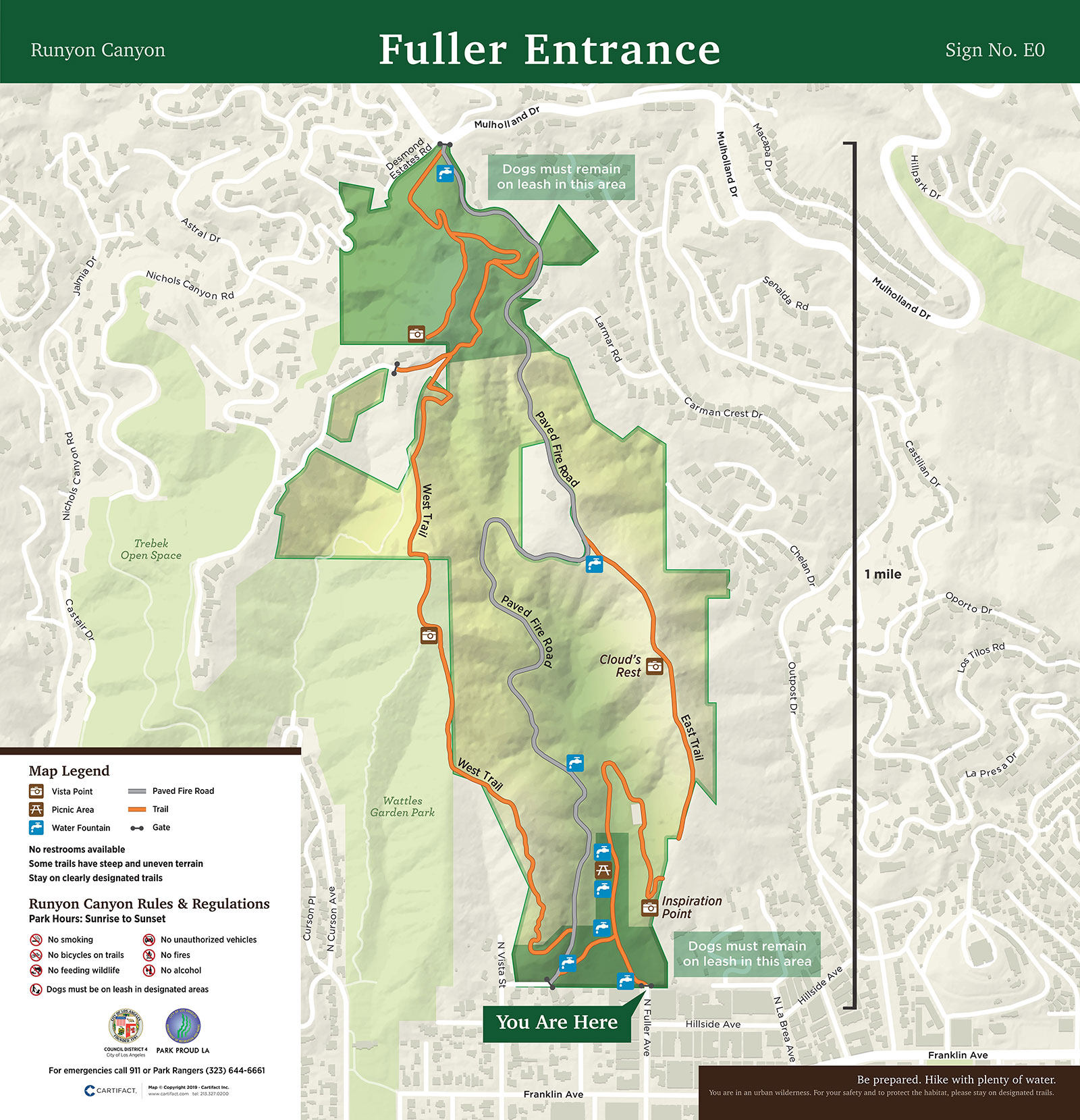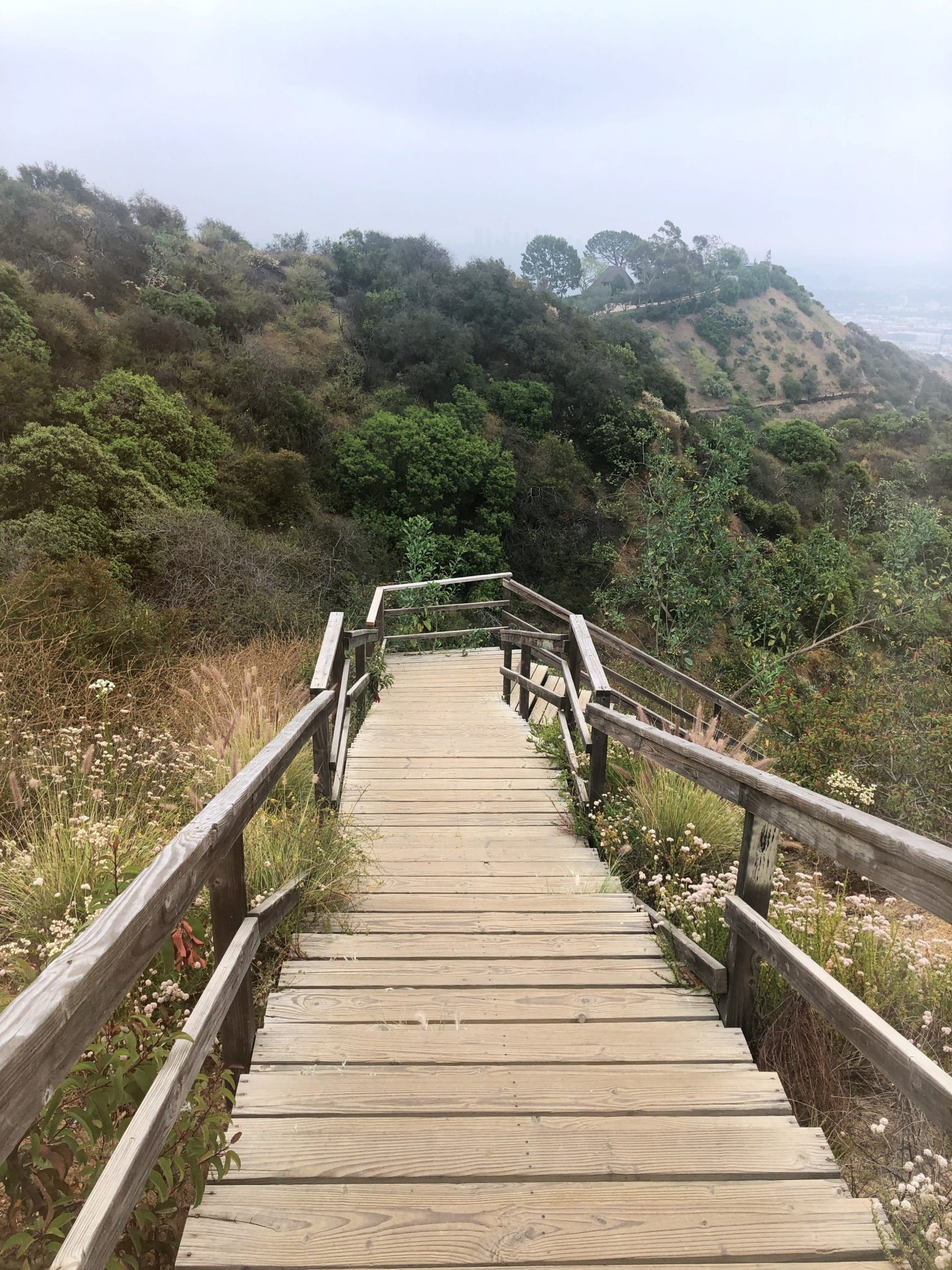Runyon Canyon Fire- A Community's Story
A sudden burst of fire near Runyon Canyon recently sent a wave of concern through the Hollywood Hills, catching many by surprise. This event, which locals quickly came to know as the Sunset Fire, brought with it a swift call for people to leave their homes, creating a scene of hurried movement on the streets below this well-loved outdoor spot. It was a moment that showed just how quickly things can change when nature’s fury takes hold, especially in areas where homes sit close to wild spaces.
The initial reports, you know, painted a picture of a fast-moving situation, with flames appearing in the late afternoon hours. People living in the area had to act very quickly, packing what they could and heading out, which, as a matter of fact, caused significant slowing of cars on the roads. It was a time when community members had to rely on the prompt guidance from fire crews and local officials to stay safe and figure out what was happening next.
As the days unfolded, the full scope of what happened became clearer, revealing the hard work put in by those who fight fires and the challenges that lay ahead for the land itself. The trails that so many enjoy for walks and views suffered quite a bit of harm, meaning it will take time and effort to get them back to their usual condition. This whole event, in some respects, serves as a reminder of the delicate balance between urban life and the wild beauty that Los Angeles holds dear.
Table of Contents
- What Happened with the Runyon Canyon Fire?
- How Did the Runyon Canyon Fire Affect People?
- What Was the Scale of the Runyon Canyon Fire?
- When Will Runyon Canyon Fire Recovery Be Complete?
- What's Next for Runyon Canyon?
What Happened with the Runyon Canyon Fire?
The Sunset Fire, as it came to be known, made its first appearance on a Wednesday evening, around 5:30 p.m., just as the day was winding down. This particular fire started near Runyon Canyon, a spot many people visit for outdoor walks and fresh air. It was a moment, you know, that caught the attention of many, as the flames began to spread. The first signs of the fire were located in the 3000 block of Runyon Canyon Road, right there within Runyon Canyon Park in Los Angeles. This spot, actually, is pretty close to the Hollywood Bowl, a well-known place for music, and also not far from the 101 freeway.
The fire then, apparently, started to move uphill rather quickly, putting a scare into those living in the area. This part of the Hollywood Hills is, in fact, quite densely settled, with many homes nestled among the natural landscape. The fire was seen burning between Runyon Canyon and Wattles Park, casting an orange glow across the surroundings in the 2300 block of North Solar Drive. This glow, in some respects, was a stark visual reminder of the serious situation unfolding.
As the evening wore on, the fire continued its progress. The spreading flames came very close to Hollywood Boulevard and the Hollywood Walk of Fame, places recognized by people all over the world. Fire crews from the Los Angeles Fire Department, or LAFD, were quick to respond, heading to the area of Solar and Astral Drives in the Hollywood Hills, which is, of course, right in the vicinity of Runyon Canyon. Their swift action was, basically, key in trying to get a handle on the situation as it developed.
The Runyon Canyon Fire's Initial Spark
The initial spark for this event, which was later named the Sunset Fire, happened on a Wednesday evening, specifically on January 8, 2025, near Wattles Park. It was, so, a brush fire that began to take hold in the Hollywood Hills, adding to the already frayed nerves of people living in Los Angeles, who are, you know, quite familiar with the threat of fires. This new fire erupting in the famous Runyon Canyon area of the Hollywood Hills on that Wednesday night led officials in Los Angeles to issue an immediate call for people to leave their homes.
The flames, in a way, began their journey around 5:30 p.m., and by about 10:45 p.m. that same night, air support was called in. Firefighting efforts from above, using aircraft, were put into action, alongside aggressive ground efforts by the crews. This combination of forces was, actually, a critical part of trying to get the situation under control. The fire, which was burning between Runyon Canyon and Wattles Park, was a sight that certainly drew concern from many watching.
First responders were seen working through the night and into Thursday morning, putting in the hard work needed to manage the fire. The city of Los Angeles, you know, had to react quickly to this event, especially with the added worry of strong winds that can make fires spread even faster. This particular fire, in fact, quickly earned its name, the Sunset Fire, as it began its destructive path in the Hollywood Hills, near Runyon Canyon, just as the sun was setting.
How Did the Runyon Canyon Fire Affect People?
When the fire broke out, it caused quite a stir among the people living in the areas below Runyon Canyon. Since this is a place with many homes packed together, the call for people to leave their houses led to very heavy traffic. People rushed to get out, and this created massive slowing of cars on the roads. It was a scene of hurried movement, as residents tried to gather their belongings and move to safety, which, basically, created a feeling of urgency across the community.
A call for everyone to leave their homes was put in place, meaning a large section of the Hollywood Hills was told to clear out. This included hundreds of homes that were put on alert, meaning they should be ready to leave at a moment's notice. The Los Angeles Fire Department, the LAFD, issued this order for the areas directly affected by the newly formed Sunset Fire. People living in Laurel Canyon Boulevard, for example, were also told to leave their homes, specifically those on the west side of that street.
The whole situation, you know, added to the already strained feelings of people in Los Angeles, as news of a new brush fire near Runyon Canyon spread. The fire was moving rather quickly uphill, threatening a place that is, actually, quite populated and sits just above the very well-known heart of downtown Los Angeles. This closeness to so many homes and popular spots made the need for people to leave their homes even more pressing, and the sight of the fire casting an orange glow over the area was, in some respects, quite unsettling for those who live there.
Evacuation Orders and the Runyon Canyon Fire's Reach
The call for people to leave their homes, which was a must-do order, was eventually lifted for most of the areas involved. This good news came on Thursday morning, as the Los Angeles Fire Department shared that the order for the wildfire that started on Wednesday evening in the Hollywood Hills was no longer in effect. However, a small section, specifically north of Franklin Avenue, still had to remain clear, just to be on the safe side. This gradual lifting of the orders brought some relief to many who had been forced to leave their houses.
Even after the immediate danger passed, the effects of the fire lingered, especially for those who enjoy walking and running outdoors. People who like to hike in the Los Angeles area had to find other places to go, as Runyon Canyon remained closed because of the harm caused by the Sunset Fire. The damage to the much-loved trails at Runyon Canyon meant that they would need a lot of work to get them back in shape after the fire swept through the area. This closure, in a way, impacted many daily routines and weekend plans.
The city's parks website provided an update, stating that for everyone's safety and to allow for the necessary repairs, Runyon Canyon would stay closed. It was a clear message that the park needed time to heal and be made safe again for visitors. While the fire itself might have been put out, the process of bringing the land back to its former state was just beginning, and this, you know, meant a continued period of adjustment for the community that uses these outdoor spaces so often.
What Was the Scale of the Runyon Canyon Fire?
When a fire like this happens, the exact size of the area it burns can sometimes be reported in different ways as more information comes in. Initially, the blaze near Runyon Canyon was said to have charred about 43 acres before the firefighters were able to get the upper hand. This was, in some respects, the first indication of how much land had been affected by the flames. The quick response of the fire crews was, you know, quite important in stopping it from getting even bigger at that point.
However, as the situation developed, other figures started to emerge regarding the size of the Sunset Fire. One report mentioned that the fire, which began last week, had scorched over 100 acres of land. This larger number suggested a more widespread impact than initially thought. Then, another piece of information stated that the Sunset Fire, which started near Wattles Park on January 8, 2025, had burned 40 acres of plant life and was fully put out by the afternoon. These varying numbers, actually, show how quickly details can change during an active fire event.
There were even more differing accounts of the fire's reach. According to CalFire, the Sunset Fire was burning in the hills just above Sunset Boulevard and Hollywood Boulevard and had already burned nearly 20 acres. And then, another report mentioned that approximately 10 acres were burning between Runyon Canyon and some other area. These different figures, you know, can be a little confusing, but they reflect the dynamic nature of how fire events are assessed and shared with the public as the situation unfolds.
Different Reports on the Runyon Canyon Fire's Size
The differences in the reported size of the Runyon Canyon fire, from about 10 acres to over 100 acres, show how difficult it can be to get a precise count during and immediately after such an event. When flames are moving quickly, especially uphill as this fire was, it can be tough to measure the exact area that has burned. Fire crews are, basically, focused on putting out the fire and keeping people safe, which is, of course, their main job. The numbers often get refined as more thorough assessments are done.
The initial reports, such as the 43 acres charred before firefighters got the upper hand, usually come from quick surveys. Later, as the fire is contained and then fully put out, more detailed mapping can be done, leading to the 40-acre figure for the Sunset Fire that was fully put out by afternoon. The 100-acre figure, you know, might have been an early estimate of the potential area that could be affected, or perhaps it included other smaller outbreaks that were part of a larger incident in the region.
The varying sizes, like the nearly 20 acres reported by CalFire or the approximately 10 acres mentioned in another account, highlight the fluid nature of these situations. Each report, in some respects, provides a snapshot from a particular time or from a specific perspective. What is clear, however, is that a significant portion of the natural landscape near Runyon Canyon was impacted, regardless of the exact number of acres

Visit Runyon Canyon | Friends of Runyon Canyon Foundation

Runyon Canyon Park

Runyan Canyon Fire: A Community's Fight Against the Flames